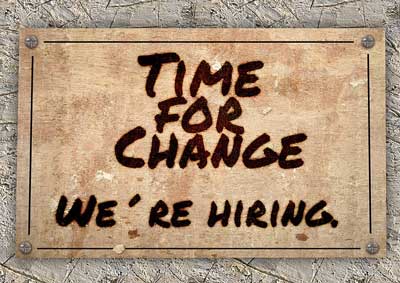- Advertising
- Bare Metal
- Bare Metal Cloud
- Benchmarks
- Big Data Benchmarks
- Big Data Experts Interviews
- Big Data Technologies
- Big Data Use Cases
- Big Data Week
- Cloud
- Data Lake as a Service
- Databases
- Dedicated Servers
- Disaster Recovery
- Features
- Fun
- GoTech World
- Hadoop
- Healthcare
- Industry Standards
- Insurance
- Linux
- News
- NoSQL
- Online Retail
- People of Bigstep
- Performance for Big Data Apps
- Press
- Press Corner
- Security
- Tech Trends
- Tutorial
- What is Big Data
How to Enable & Support Good Data Stewardship in Your Organization
Data stewardship is the act and responsibility of handling and managing data quality within an organization. Sometimes it's the job title of a single employee, other times it manifests as one of the responsibilities within the job description of another title -- such as the CIO or the IT manager.
Data stewardship might also be the prevalent philosophy in an organization, instead of a job description. However, data stewardship does require someone to be in control and others to follow their lead. Stewardship can't happen when data is continually mishandled.

Data stewardship is the act and responsibility of handling and managing data quality within an organization. Sometimes it’s the job title of a single employee, other times it manifests as one of the responsibilities within the job description of another title—such as the CIO or the IT manager. Data stewardship might also be the prevalent philosophy in an organization, instead of a job description. However, data stewardship does require someone to be in control and others to follow their lead. Stewardship can’t happen when data is continually mishandled.
Data stewardship involves data cleansing, checking and assuring data accuracy and quality, making sure that the data is stored and utilized consistently throughout the organization, establishing the terms and definitions that will be used across the company to define data-related concepts, and setting up rules to govern now data is entered and used. In the age where data is the ruling monarch, the data steward makes sure it’s up to the job.
It is not easy to track and document the success of data stewards. When things go right, nobody notices. It’s only when things go wrong that people start to notice, and then there’s a problem (usually many) underway that needs to be addressed. What does it take to enable and support good data stewardship in your organization?
Smart Hiring

The person or team who oversees data stewardship needs to have both a strong understanding of the data, analytics, and databases as well as a solid grasp on the business side of the organization. Look for candidates who understand the tech, but can talk about it in laymen’s terms that don’t confuse the business folks.
Smart Training

Once you have the right data steward in place, it will be their job to get the rest of the organization on board with how data should be entered and used. It’s so tempting to want to start a radical, broad-sweeping change when there are lots of issues to address, but that’s rarely (if ever) the right way to go about it. Address changes in small, manageable increments. Make sure workers are thoroughly trained and understand both what to do and why you’re doing it.
Smart Change Management
As you can see, good data stewardship is going to be about making lots of small changes, but the changes need to be ongoing—each designed to move the organization a step ahead of where they were before. This means change management. Any data steward is well advised to master the principles of change management. It helps them improve the quality, accuracy, consistency, and usefulness of their organization’s data, without turning the company on its head to get it done.
Got data? Bigstep can help with secure, high-performance storage. Get the fast, powerful analytics you need on the Full Metal Cloud, where storing big data is no big deal. Learn more about us today.
Readers also enjoyed:

3 Predictions for Hadoop & Big Data Between Now and 2021

Leave a Reply
Your email address will not be published.